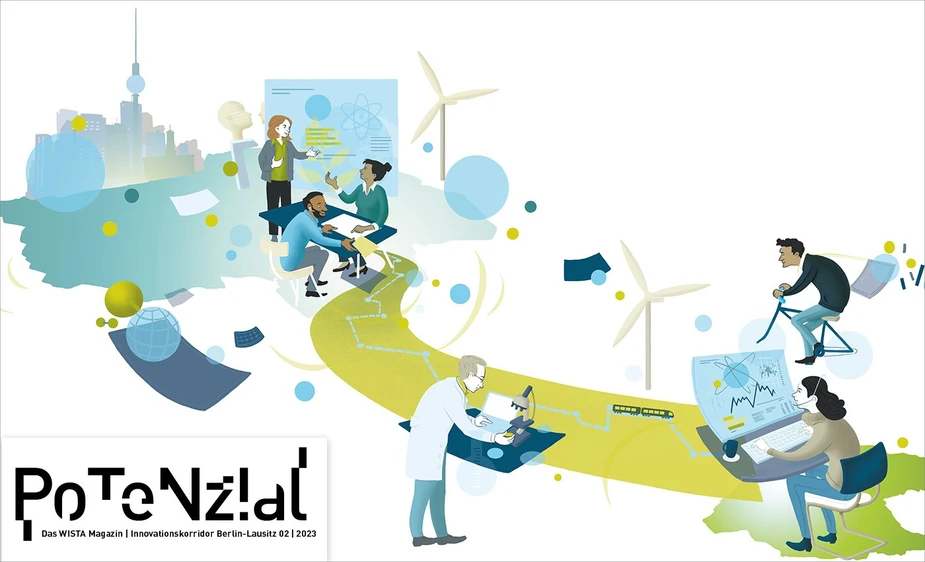The spirit of departure
Along the Innovation Corridor Berlin-Lusatia, a new science and technology region is being created that offers space for forward-looking projects and cooperations
It’s a pilot project. Along the railway between Berlin and Lusatia, an innovation corridor is planned that connects Adlershof, Germany’s largest technology park, with Cottbus and its Brandenburg University of Technology Cottbus-Senftenberg (BTU). Its aim is to kill several birds with one stone. A daunting task: Many great goals, players, and diverse ideas must be found, connected, coordinated, and overseen. Since mid-last year, this has been the everyday business of Lilli Zylka and Ulrike Kaiser. Each at their respective entrance to the corridor.
“I was eager to be involved in the project right from the onset,” says Lilli Zylka, who has been responsible for setting up the Innovation Corridor at WISTA Management GmbH since August 2022. Previously, she was project head at the Zukunftsorte Business Office, which, too, is a WISTA project. Zylka’s colleague in Brandenburg is Ulrike Kaiser. She is a business economist, a Lusatian returnee, and responsible for her end as the project head of Strukturentwicklungsgesellschaft Wirtschaftsregion Lausitz GmbH (WRL).
Innovation corridors aim to advance the transfer of science and research in the corridor’s region, find sensible solutions in terms of transportation, and control future rural settlements. Technology Park Adlershof and the emerging Lusatia Science Park are the two main pillars of the Innovation Corridor. Between and around those pillars is ample room for ideas. Already, there are many of them. All over Lübbenau, Wildau, and Senftenberg, one can see cooperation, model projects, and co-working spaces being created. “What is needed,” says communications manager Zylka, “is a clear profile that is a good match for the region, that builds on existing expertise, and makes the region better known.” This is what is currently being worked on with high pressure.
Helping to shape the transformation process of Lusatia by moving away from lignite is something Kaiser too finds extremely intriguing. The federal government is making ten billion euros available for this purpose. By 2038, the phasing out of coal should be completed and the transformation into a location for science, research, and innovation should be well underway. “One of my main tasks at the moment is to position the innovation corridor issue in all the relevant places,” says Kaiser. The people must be able to find out how they can “get involved”. It’s all about participation, finding the right multipliers, and “taking along” local communities and mayors.
“There is a palpable spirit of departure whenever I meet people,” Zylka adds, “and a confidence that Berlin and Brandenburg could benefit from each other in equal measure.” A project of this scale consists of many layers and many goals. In the end, the aim is to create a type of “blueprint” for other corridors that create strategic links between the two German states. “Bringing together” an attractive place to live with work and mobility.
Doing so requires staying power. However, both have a precise idea of what the corridor might look like in 2035: The Innovation Corridor will be a success story of the economic restructuring of an entire region. Mobility across the Corridor will be much more seamless than it is today. It will act as a catalyst for the infrastructure between Berlin and Cottbus. It will attract smart minds from other regions and those wanting to go back. They will find jobs and apprenticeships in research and development as well as manufacturing. People will be doing sustainable, flexible, and meaningful work.
Soon, when the phrase Innovation Corridor is uttered, people will know exactly what it means: Europe’s leading science and knowledge transfer region, full of lively collaboration, and excellent, forward-looking projects. And a matrix for other innovation corridors in Berlin’s metropolitan region.
Rico Bigelmann for POTENZIAL
